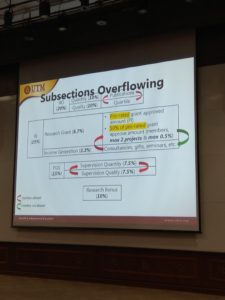
Above picture – cannot be overflow. Must cover each category.
Belowpicture – Among these group – eLPPT can be overflow (like concept fardu kifayah)
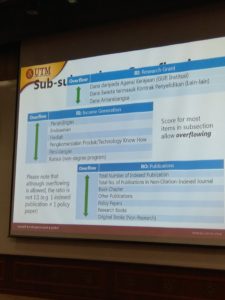


Above picture – cannot be overflow. Must cover each category.
Belowpicture – Among these group – eLPPT can be overflow (like concept fardu kifayah)

Weather data is temporal data. It changes according to time (hours, day, month or years). Since weather is crucial for us human to do our activities, people forecast it. By having forecast data, it helps business and people plan for their outdoor activities. In Malaysia – it is very crucial during kenduri kahwin, some people still believe and hire ‘bomoh hujan’ to forecast and prevent rain during the wedding day. More over, it helps business plan like transportation, construction and farmers for crop irrigation and protection. Eventhough the weather data in Malaysia is not as crucial as in four season country (since it will not help people on how to dress or either to bring extra coat for windy days) but forecast data can help in term of health issue like asthma and heat stress especially for children’sschool activities.
Since the data for Forecast weather is everywhere – from your own handphone, PC, TV and radio. I think for Haida (since you are from MANA – assurance course), it is time for us to check the accuracy between the forecast data and the real one. It will help to prove the accuracy of Jabatan Meteorologi Data. If the comparison has been done, why dont we visualize the comparison to ease the forecast data understanding.
Thus, the objectives for Haida research can be something like this
In order to do that, what you need to do this week is:
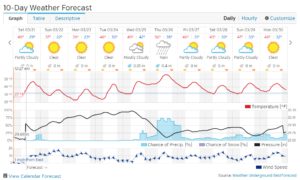
Source: weather underground weather forecast.
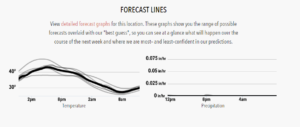
How is telecom industry benefiting the big data?
Telecom industries are sitting on a gold mine, as they have plenty of data. But what they require is a proper digging and analysis of both structured and unstructured data to become a valuable asset to the industries.
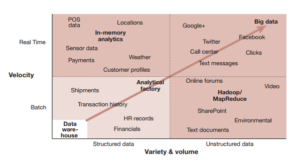
Big Data from the perspectives of telecommunication industry
Through proper digging, they are able to get deeper insights into customers’:
From Acker et al (2013), the telecom industry must experiment their own data. Demonstrating what they have on hand to see what kinds of connections and correlations it reveals, This process must be carried out iteratively to emerge the more efficient operations and more effective marking.
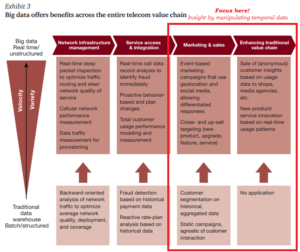
Source: Acker et al (2013)
References:
Temporal Data and Business Intelligence
According to Aigner et al (2007), time is an outstanding dimension. In popular physics, time is the fourth dimension. For ages, scientists have been thinking about meaning and implications of time. Understanding temporal relations enables us to learn from the past to predict, plan, and build the future. In the world of computerization, time is like an invisible presence. Business systems mostly operate in some sort of existential present tense and programmed into a unique timestamp, flags and update. Hence, it is no surprise that time is also a key concern in Visual Analytics, where the goal is to support the knowledge crystallization process with appropriate analytical and visual methods [1]. Visualizing time-oriented data, which is the focus of this paper, is not an easy business. Even though many approaches to this task have been published in recent years, most of them are specific to only a particular analysis problem. The reason why most methods are highly customized is simple: it is enormously difficult to consider all aspects involved when visualizing time-oriented data.
In current years, the temporal data is still valid and significant to emphasize the value of Business Intelligence (BI). The temporal concept enables business users to explore past business events to understand problems, see trends (monitor and review the data) and these activities can support the decision making as well. Thus, in many cases, users get point-in-time views of the business at defined times, such as the daily or month-end close. However, as business operations have become increasingly real-time in nature, the need for a continuous history that provides an ongoing, complete and accurate record of transactions and business performance has become paramount. Temporal — and in particular, bi-temporal — data is thus central to effective BI processes and should be a core part of any data warehouse or data mart (Devlin, BI Expert Panel)
Furthermore, the business context is growing in the complexity of both BI needs and the temporal characteristics of data. Decision making is increasingly real-time in nature. Predictive analytics extends our interest from the past and present into the future. Big data and the Internet of Things take us into a new world where the people who use data often don’t control its structure or content. Even the bi-temporal model, Johnston is reluctantly forced to admit, may turn out to be insufficient to carry all the temporal meaning that a user may wish to impart to or extract from business data. A tri-temporal model, with three-time axes, may eventually be required to make full sense of data. Then quoted from Johnson, the understanding for the interconnection between Bi, analytics and data temporal is vital if we are to navigate the expanding world of big data. Without such an understanding – Devlin believes the implementation of BI was destined to crash and burn. Therefore, it should be seen as mandatory preparation to revisit the theory and practice of temporal data.
An important issue that concerns all previous points is task-orientation. This means that Visual Analytics systems should automatically suggest and parameterize visual, analytical, and interaction methods based on the users’ task at hand. Recently, an interesting analysis of possible visualization tasks has been published in [3]. That list of tasks can be used as a basis for future research on task-oriented Visual Analytics. In that regard, perceptual issues must be further investigated. Empirical tests have to be conducted to judge which forms of presentation (2D or 3D, static or dynamic, etc.) are best suited for particular analysis tasks.
Aigner, W., Miksch, S., Müller, W., Schumann, H. and Tominski, C., 2007. Visualizing time-oriented data—a systematic view. Computers & Graphics, 31(3), pp.401-409.
Devlin, B. Temporal Data Reality: In BI, time is of the essence. https://goo.gl/VdEt7T
Definition of telecommunication:
Communication over a distance by cable, telegraph, telephone or broadcasting. It is the transmission of signs, signals, messages, words, writings, images and sounds or intelligence of any nature by wire, radio, optical or other electromagnatic systems. Telecommunication occurs when the exchange of information between communication participants includes the use of technology. It is transmitted either electrically over physical media such as cable or electromagnatic radiation such as technology.
The value of data within telecommunication:
The most valuable telco data is an untapped source of customer information. Thus, the big companies nowadays turn telecom carriers since it has a valuable source of customer data (2017 study shows over than 300 brands in the US, UK and France finds than 67% of brands consider telecoms operators to be a better original source of data insights than Google, facebook, Apple and Samsung). Eventhough Google has 59% and Facebook has 52% remain the dominant brand partners for data insights and digital advertising, 26% of brands say they do currently partner with telcos that specialize in digital advertising. However, 48% of brands are not aware of telecoms operators’ ability to even offer these insights – and this is a good news for telco and it is our role to let them aware.
The potential that can be done with telco data:
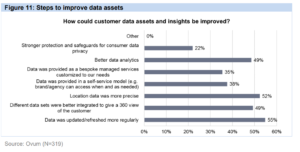
Special attention to Khairunnisa – please look at factor 2)better data analytics and 7)data was updated more regularly. The combination of these might bring us focus to on data temporal. See you on friday 11 August ’11 (Airis’ birthday)
Thanks to Ian Barker at https://goo.gl/fjQg3w and Ovum Survey https://goo.gl/vJbdnZ
Temporal Data
synonym for time-oriented data, time-varying data, time-dependent data
Definition of temporal data:
Temporal data is data that varies over time (Jensen and Snodgrass, 1999)
A temporal data denotes the evolution of an object characteristic over a period of time (Daassi and Nigay, 2004)
Time dependent data is characterized by data elements being a function of time. In general, data takes the form of d = f(t), where data defined at discrete time stamps t, f is functions of time (Muller and Schumann, 2003)
Time series data is characterized by data elements being a function of time. In general, this data takes the following form, d = yt and y = f(t)
Key references for Data Temporal
Presenting Data for Monitoring Activities – Part 1: Definitions
What is monitoring? (Definition of monitoring):
The act of carrying out planned observations, measurements, etc in order to collect, review and use information for a stated goal (to assess a particular situation) from – slideplayer.com/slide/7270385
Observer and check the progress or quality of (something) over a period of time – keep under systematic review; maintain regular surveillance over; listen to and report on. From google definition
Supervising activities in progress to ensure they are on-course and on schedule in meeting the objectives and performance targets. From business dictionary.
Monitoring is one activity sub under management. Because within management, we also do planning, control, monitoring and reviewing any of the activities.
Where does the monitoring happen?
In the organization – dashboard – business performance
In the industries – manufacturing process in the assembly line
In the project management – construction, physical activities.
In the security – airport, library, supermarket.
Definition of MYRA monitoring:
The act of carrying out planned observations or measurements related to the occurence changes of University KPIs (e.g. grants, publications and awards) in order to collect and analyse information needed to achieve stated KPT-KPI goals.
When we make doa, we are expecting an immediate answer from Allah.

The thing is, our doa getting answered immediately or not is nothing to do with either Allah is happy with us or not. There is no connection between these two.
E.g. Nabi Nuh invited his nation for islam for 950 years. Do you think this kind of guy was not making doa for his son and wife?Nabi Muhammad was not making doa for his uncles – Abu Talib and Abu Lahab? Nabi Yaakub a.s not making doa for his twelwe sons?
Listen more to Nouman Ali Khan for How Doa works at https://goo.gl/VGsX4E
Apakah bezanya diantara MYRA I and MYRA II?
MyRA I- to maintain RU status
MYRA II – Sapa paling top – untuk dapat lebih dana RU (ikut ranking).